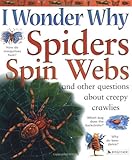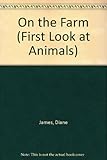Lesson 2: Table of Contents and Index
Lesson Plan
I Wonder Why Spiders Spin Webs and Other Questions About Creepy Crawlies | 820L

- Learning Goal
- Explain that informational texts often include a table of contents or index to find information about a topic.
- Use a table of contents or index to find information about a topic.
- Duration
- Approximately 50 minutes
- Necessary Materials
- Provided: Unit Example Chart, Independent Practice Worksheet
Not Provided: I Wonder Why Spiders Spin Webs and Other Questions About Creepy Crawlies by Amanda O’Neill, A First Look at Animals: On the Farm, chart paper, markers, Copies of the table of contents and index from I Wonder Why Spiders Spin Webs and Other Questions About Creepy Crawlies
-
Teacher Modeling

will explain to students that another characteristic of informational books is that they often include text features that help you find information such as a table of contents and index. I will add these features to my Characteristics of Informational Texts Chart that I started in Lesson 1 (Example Chart is provided in Unit Teacher and Student Materials). I will explain that a table of contents comes at the beginning of a book. It tells the reader the heading for each chapter of a book, and what page each chapter starts. An index is at the back of a book. It tells the reader what topics are in a book and on what page you can find information about a topic. I will model using these features in a familiar informational text (from Lesson 1), A First Look at Animals: On the Farm. I will show the table of contents and explain that I want to find information about donkeys. The table of contents shows me that I can find this information on page 18, so I will flip to that page to verify that there are facts about donkeys. Then, I will explain that I want to learn about sheep. I will check the index in the back of the book to see where I can find this information. I see that I can turn to page 8 to learn about sheep. I will flip to the page and read some facts to verify that there are facts about sheep. Since this book has a table of contents and index, I will add the title to the chart.
-
Think Check
Ask: "How did I use text features to find information about a topic in an informational text?" Students should reply that you looked at the table of contents at the beginning of the book to find chapter headings and page numbers related to your topic. You used the index in the back of the book to find the page number for any topic in the book.
-
Guided Practice

will work together to use the table of contents and index to locate specific information in I Wonder Why Spiders Spin Webs and Other Questions About Creepy Crawlies by Amanda O’Neill. We will use the table of contents and index to locate information about spiders, beetles, and moths. As a class, we will explain which text feature we used and which page the text feature told us to turn to. We will turn to those pages in the book to read and verify that the information that we want is there. We will reflect that this informational text has a table of contents and index, so we will add the title to our Characteristics of Informational Books Chart.
-
Independent Practice

will use a copy of the table of contents and index from I Wonder Why Spiders Spin Webs and Other Questions About Creepy Crawlies to figure out where to find information about topics in the informational book. You will write down the page number where the information can be found. You will also explain how you know this is an informational book. After you are done, you will share with your answers with the class, and the teacher will verify the pages where the information is located in the book by reading the pages aloud. (Independent Practice Worksheet is provided.)
Texts & Materials
Standards Alignment
(To see all of the ReadWorks lessons aligned to your standards, click here.)



This information has been very helpful for me. Thank you very much for all the valuable resources that you have made available for teachers.